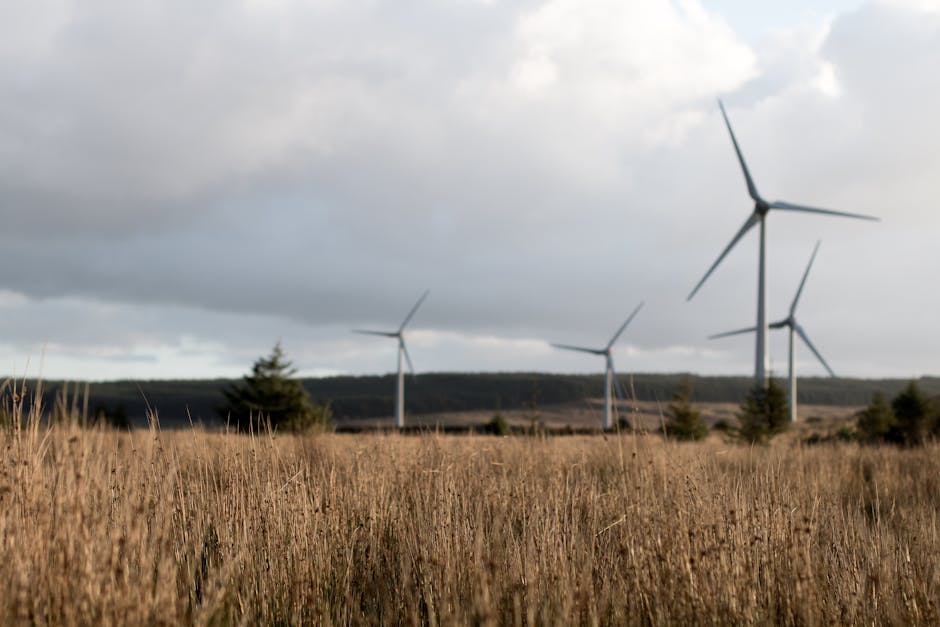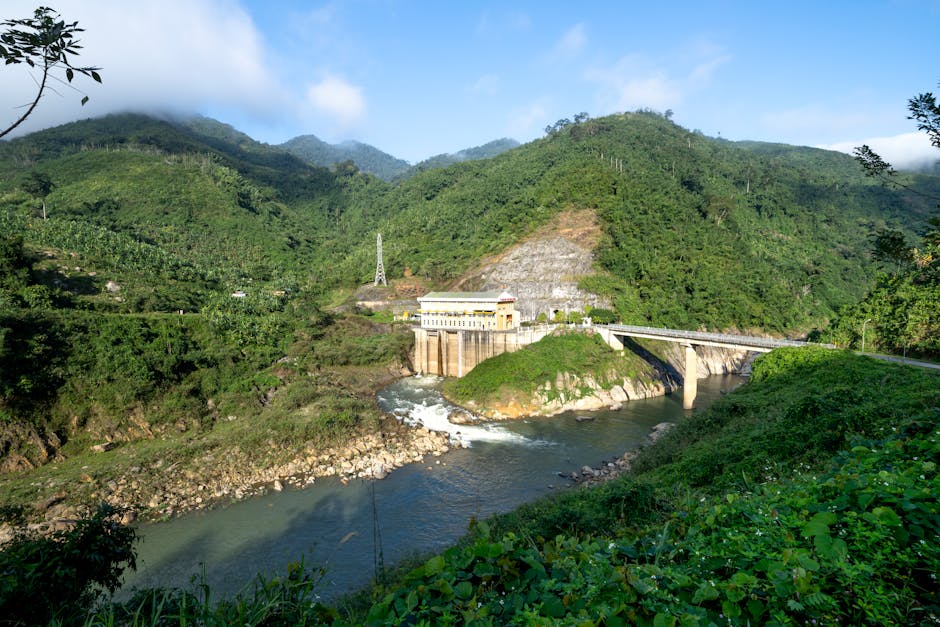Sustainable Manufacturing Practises: Strategies for Reducing Environmental Impact
You’re adopting sustainable manufacturing practises to reduce your company’s environmental impact. To get started, consider switching to renewable energy sources like wind or solar power to reduce your reliance on fossil fuels. Implementing water-saving technologies and practises can also minimise your water consumption. Additionally, establishing recycling programmes, optimising production workflows, and adopting energy-efficient production methods can reduce waste generation and energy consumption. By evaluating your supply chain’s environmental risks and encouraging suppliers to adopt sustainable practises, you can further minimise your environmental footprint. As you explore these strategies, you’ll uncover more opportunities to reduce your environmental impact.
Key Takeaways
• Adopting renewable energy sources, such as wind or solar power, can reduce reliance on fossil fuels and lower carbon footprint.• Conducting energy audits and implementing efficient production workflows can minimise energy waste and reduce environmental impact.• Implementing recycling programmes, designing products with recyclability in mind, and reusing materials can conserve natural resources and reduce waste generation.• Assessing environmental risks associated with suppliers and collaborating with them to adopt sustainable practises can minimise environmental footprint.• Implementing water-saving technologies and practises, such as low-flow fixtures, can reduce water consumption and minimise environmental impact.
Adopting Renewable Energy Sources

By switching to renewable energy sources, such as wind, solar, or hydro power, manufacturers can substantially reduce their reliance on fossil fuels and lower their carbon footprint. This shift not only helps combat climate change but also provides a competitive edge in the market.
You can tap into the benefits of renewable energy by investing in on-site energy generation or purchasing renewable energy credits. These credits, also known as carbon credits, offset your company’s greenhouse gas emissions, allowing you to claim a reduced carbon footprint.
To maintain a stable power supply, you’ll need to evaluate energy storage solutions. This might involve investing in battery storage systems or other innovative technologies. Energy storage enables you to store excess energy generated during the day for use during periods of low energy production, minimising reliance on non-renewable sources.
When adopting renewable energy sources, assessing your energy needs and identifying the most suitable option for your operations is crucial. You may need to consult with energy experts or conduct an energy audit to determine the best approach for your facility.
Reducing Water Consumption Strategies

You can substantially reduce your facility’s water footprint by implementing strategies that optimise water usage throughout your manufacturing process.
One effective approach is to conduct a water audit to identify areas of inefficiency and opportunities for improvement. This involves monitoring and measuring water usage patterns, identifying water-intensive processes, and pinpointing areas where water is being wasted. By conducting a thorough water audit, you can identify opportunities to reduce water consumption and develop targeted strategies to minimise waste.
Another key strategy is to implement leak detection systems to identify and address hidden leaks and water losses. These systems use advanced sensors and monitoring technology to detect even small leaks, allowing you to take swift action to repair or replace faulty equipment. By detecting and addressing leaks promptly, you can prevent substantial water waste and reduce your facility’s overall water consumption.
Additionally, you can implement water-saving technologies and practises, such as installing low-flow fixtures, optimising cleaning and sanitation procedures, and reusing water in non-potable applications. By combining these strategies, you can dramatically reduce your facility’s water footprint and minimise the environmental impact of your manufacturing operations.
Implementing Recycling Programmes

Effective recycling programmes can be implemented in your facility by establishing a thorough waste management system that identifies, collects, and processes recyclable materials. This involves identifying potential recyclables, setting up collection systems, and partnering with recycling facilities to process the materials.
By implementing a recycling programme, you can drastically reduce waste, conserve natural resources, and decrease your environmental footprint.
Designing for recyclability, implementing closed loop systems, engaging employees, and continuously monitoring and improving the programme are all essential strategies for a successful recycling initiative.
Design for recyclability: Design your products with recyclability in mind, using materials that can be easily recycled and minimising waste generation.
Closed loop systems: Implement closed loop systems where recycled materials are used to produce new products, reducing the need for virgin materials and minimising waste.
Employe engagement: Educate and engage your employees on the importance of recycling and the impact it has on the environment, encouraging them to take an active role in the recycling programme.
Continuous monitoring and improvement: Regularly monitor and assess your recycling programme, identifying areas for refinement and implementing changes to increase efficiency and effectiveness.
Sustainable Supply Chain Management

As manufacturers take steps to reduce their environmental footprint through recycling and waste reduction, they must also consider the impact of their supply chain on the environment.
You can’t control what you don’t measure, so a crucial step is to assess the environmental risks associated with your suppliers. Conducting risk assessments will help you identify areas of improvement and prioritise efforts to mitigate negative environmental impacts.
To reduce your supply chain’s environmental footprint, you’ll need to develop strong supplier partnerships.
Collaborate with suppliers to implement sustainable practises, such as using renewable energy sources, reducing water consumption, and minimising waste. By working together, you can identify opportunities for improvement and share best practises.
When evaluating suppliers, consider their environmental track record, compliance with regulations, and commitment to sustainability.
You can also encourage suppliers to adopt sustainable practises by offering incentives, such as preferential pricing or joint marketing initiatives.
Minimising Waste Generation Techniques

Implementing efficient production workflows and optimising material usage can substantially reduce waste generation in manufacturing facilities. By streamlining production processes, you can minimise waste generation and reduce the environmental impact of your operations.
One effective way to achieve this is by conducting a Root Cause Analysis (RCA) to identify the underlying causes of waste generation. This involves analysing the production process to pinpoint areas where waste is most likely to occur and implementing corrective actions to prevent it.
To further minimise waste, you can use Waste Stream Mapping to visualise and analyse the flow of materials throughout your production process. This helps identify areas where waste is generated and opportunities for reduction or elimination.
Some other strategies you can employ to minimise waste generation include:
- Implementing a ‘design for recyclability‘ approach to product design, which encourages the use of recyclable materials and minimises waste generation during production
- Implementing a ‘closed-loop’ production system, where materials are constantly cycled back into production to minimise waste generation
- Implementing a waste reduction target and tracking progress towards it
- Providing training and incentives for employees to identify and reduce waste generation opportunities
Energy-Efficient Production Methods

By optimising energy consumption in your manufacturing facility, you can substantially reduce your organisation’s carbon footprint and operating costs, making energy-efficient production methods a vital component of sustainable manufacturing practises.
One effective way to achieve this is by conducting regular energy audits to identify areas of inefficiency and opportunities for improvement. An energy audit will help you pinpoint energy-intensive processes and equipment, allowing you to prioritise upgrades and retrofits that can substantially reduce energy consumption.
Implementing energy-efficient production methods can be achieved through various means, such as upgrading to energy-efficient lighting and HVAC systems, optimising production schedules to reduce peak energy demand, and investing in energy-efficient equipment and machinery.
Additionally, you can explore alternative energy sources, such as solar or wind power, to further reduce your reliance on non-renewable energy sources.
Conclusion
As you integrate sustainable manufacturing practises into your operations, you’ll be like a master chef, skilfully blending ingredients to create a recipe for environmental stewardship.
By adopting renewable energy sources, reducing water consumption, implementing recycling programmes, and minimising waste generation, you’ll be cooking up a storm of eco-friendly production methods.
By embracing these strategies, you’ll not only reduce your environmental footprint but also savour the taste of long-term business success.
Contact us to discuss our services now!
